MASH club builds mixed API community

Group uses discussions, social events to bond over unique ‘joys and struggles’
BY SWARAJ AGARWAL SENIOR STAFF WRITER
When Sydney Pearson ’25 joined the University’s Mixed Asian-Pacific Islander Students’ Heritage Club, it was one of the first times she had encountered a space dedicated specifically to multiracial students. And while MASH’s focus on mixed Asian-Pacific Islander identity “can sound hyper-specific to some,” Pearson wrote in an email to The Herald that she quickly found the club to be “incredibly inclusive (and) expansive.”
From deep discussions to lighthearted socials, MASH hosts on-campus events aimed at building community for students with mixed API identities. The club, originally founded in 2002. is the only on-campus affinity group specifically for students with mixed API identities, according to Pearson, who now serves as the
group’s social chair. And in recent meetings, the group has seen greater turnout than expected, Pearson wrote.
According to MASH President Nova Dea ’24, the club is ideal for students with mixed API identities who “don’t really fit into either one of their identities perfectly.”
Dea, who is half Chinese and half Hispanic, said she had struggled to build a sense of belonging in other af-
U. community members react to Brazil riots
“It was really shocking just to watch,” Cherman said. “It’s one of those things where you can’t take your eyes off it.”


finity groups that she initially joined. Dea then joined MASH, which she said is “the perfect intersection” between her two identities. Now, she wants to help foster a community “where everyone feels that they belong.”
The club carves out a needed space for students with mixed API identities on campus, said MASH Vice President Zane Darden ’24. He said that while
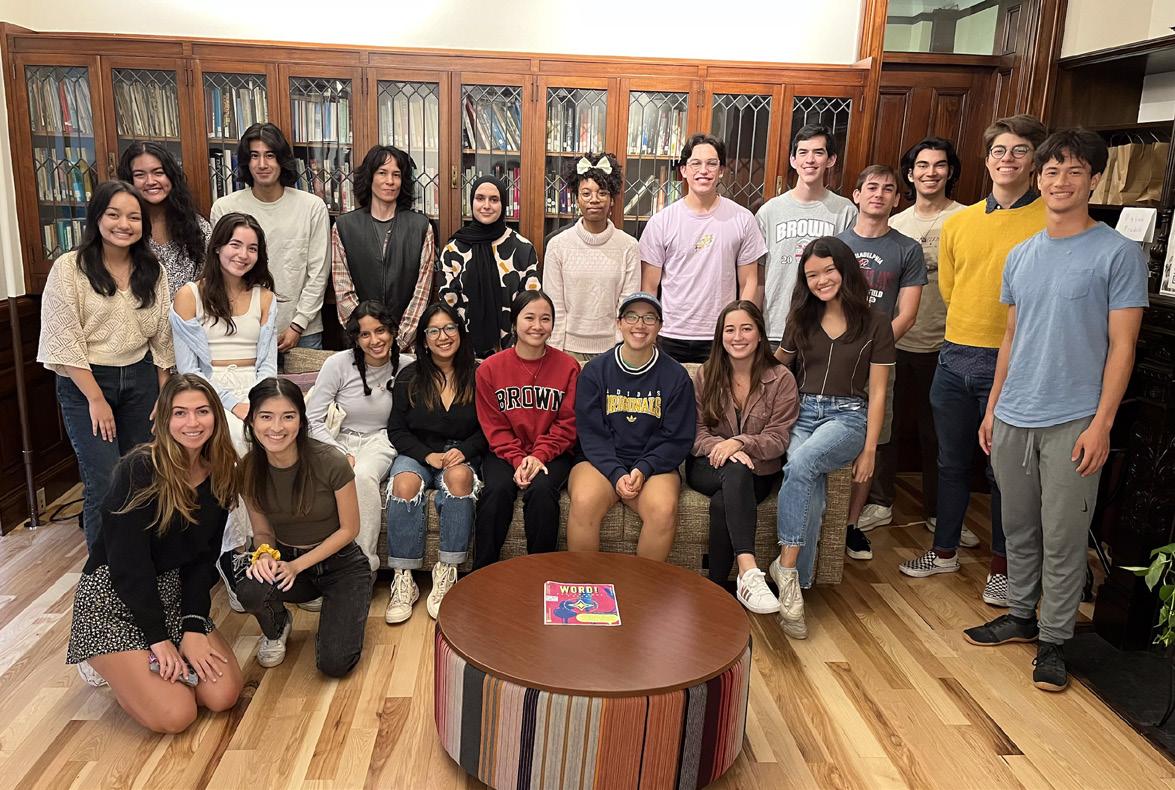
SEE MASH PAGE 4
SPORTS
BY DANA RICHIE STAFF WRITER
Deborah Cherman ’25 was visiting her grandparents in São Paulo, Brazil when thousands of rioters stormed the Supreme Court, Congress and presidential buildings in Brasilia, the country’s capital, in an attempt to seize power away from newly-elected president Luiz Inácio Lula da Silva.
Many of the rioters were supporters of Jair Bolsonaro, Brazil’s far-right, previous president who lost his post in October’s runoff election to leftist Da Silva, who assumed office at the beginning of the year.
On Jan. 8, only a week after Da Silva was sworn into office, Cherman found herself sitting with her grandparents in front of the television for hours, watching the events of the riots unfold.
Rioters demanded military aid in ousting Da Silva from his post and restoring Bolsonaro to presidency. According to AP News, several hours passed before the government regained control of Brasilia’s Three Powers Plaza, where the buildings are located. Hundreds of participants have since been arrested.
Camila Dangot ’25, who was born in Brazil before moving to the United States as a child, remembered feeling an overwhelming sense of political responsibility as she followed the news on the day of the riots. “I still have to be informed and conscious of everything that is going on politically (in Brazil) because I do vote,” Dangot said. “I have some sort of influence, so I need to be sure that what I’m doing is informed.”
Dangot was particularly struck by the scale of destruction committed by
SEE RIOTS PAGE 3
Animal
tranquilizer in
44%
of R.I. drug supply, study says
School and a principal investigator of testRI, in an email to The Herald.
A national problem
Men’s hockey team splits weekend games
BY INJY EL-DIB CONTRIBUTING WRITER
A two-year drug testing study has revealed the prevalence of xylazine, a veterinary sedative, in the Rhode Island drug supply, prompting researchers to spread awareness about the substance and its potential adverse effects.
Xylazine has increased in prevalence in the drug supplies of cities such as Philadelphia and caused increasing numbers of overdoses in cities such as Chicago. The Rhode Island study, testRI — a joint effort between the University’s School of Public Health and the Alpert Medical School — showed that 44% of 90 samples of fentanyl, crack and other drugs tested contained xylazine.
“Xylazine vials have been encountered during drug seizures and crime investigations that indicate diversion from the veterinary supply,” wrote Rachel Wightman, professor of emergency medicine at the Med
Alexandra Collins, assistant professor of epidemiology in the School of Public Health and another principal investigator of testRI, told The Herald in an interview that states such as Rhode Island, Massachusetts, North Carolina and New York have seen an increase in reported xylazine-related overdose cases in the last few months and years.
Wightman wrote that people exposed to xylazine experience “deep, prolonged sedation” which, when combined with opioids, can increase the “risk of central nervous system depression and breathing difficulties.”
And because xylazine is not an opioid, naloxone “cannot reverse its effects,” Collins said. People exposed to xylazine report “feeling extraordinarily groggy and sedated even after Narcan has been administered,” she said.
Xylazine users also report “intense skin wounds and infections that are really challenging to treat” as another side effect, Collins said.
SEE TRANQUILIZER PAGE 4
BY DENNIS CAREY SENIOR STAFF WRITER
Last weekend, the men’s ice hockey team (8-11-2, 4-8-2 ECAC) split two games at home against Dartmouth (415-1, 3-9-1 ECAC) and No. 9 Harvard (13-5-1, 11-3-0 ECAC), falling to the Big Green 4-3 and upsetting the Crimson 3-2.
Head Coach Brendan Whittet ’94 acknowledged the added significance of a major victory over a top-ranked rival. “It’s irrelevant who you’re playing, but it’s always nice to beat Harvard,” he said via Brown Athletics following the game.
Beat ‘at our own game’: Dartmouth
4, Brown 3
The Bears entered Friday’s matchup against the Big Green as favorites, having won their last three games by outscoring opponents 15-4 and averaging five goals a game over that stretch. Due to a violation, the Bears started the game on their heels defending a Dartmouth power play. A block by Samuli Niinisaari ’23 and a wide shot by Dartmouth allowed the Bears to complete
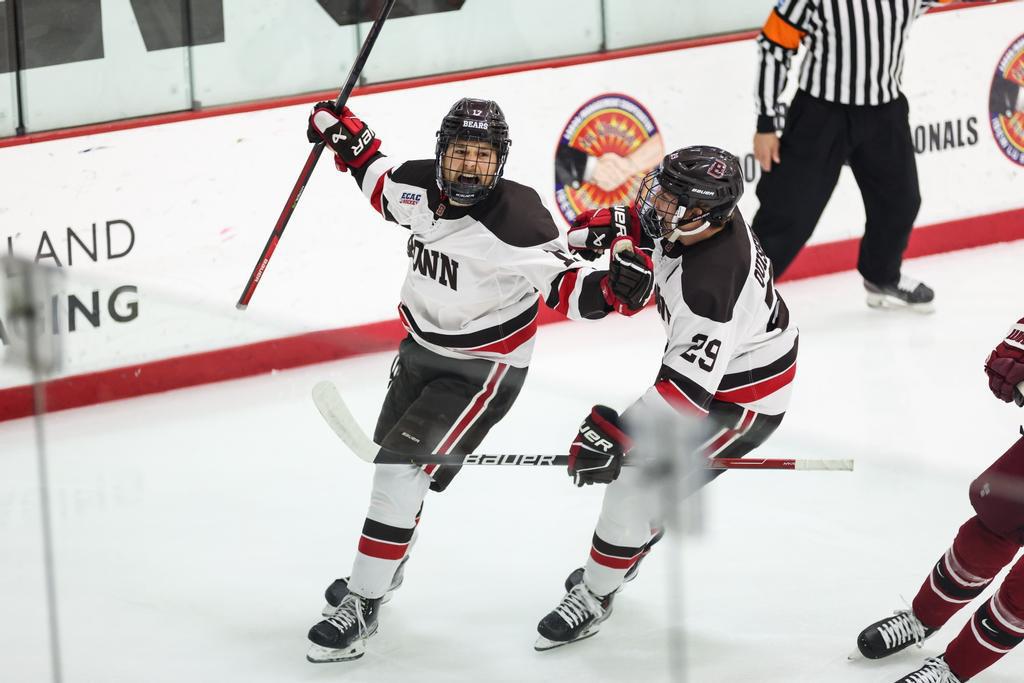
the penalty kill.
Shortly after, the Bears capitalized on a power play chance of their own when captain Luke Krys ’23 scored his second goal of the season, giving Bruno an early 1-0 lead.
The Bears continued to bombard the Big Green for the rest of the period, firing 12 shots on goal to Dartmouth’s three, but Brown was unable to find the back of the net. In the 12th minute, Bruno committed a kneeing penalty, giving Dartmouth its second power play of the game, which The Big Green soon used to even the score.
Early in the second period, Dartmouth seemed to be in control until a
breakaway gave Brown forward Thomas Manty ’25 open ice facing only the Big Green goalie. Manty made the most of the opportunity and scored Bruno’s second goal of the game off an assist by Krys, who helped generate each of the first two Bears goals.
But Dartmouth immediately responded, once again tying the game in the 6th minute of the second period with a textbook shot setup and expert puck movement.
The Bears responded quickly, securing their second goal of the period in the 12th minute when Brett Bliss
SEE HOCKEY PAGE 5
THE BROWN DAILY HERALD BROWNDAILYHERALD.COM SINCE 1891 FRIDAY, JANUARY 27, 2023 VOLUME CLVIII, ISSUE 2 Students excited, concerned about kosher, halal dining renovations Page 8 University appoints new interim dean of financial aid Page 6 Married professors create solution for centuries-old math problem Page 2 U. News U. News S&R 29 / 41 30 / 47 TODAY TOMORROW Sender ’25: Brown parking is issue of efficiency, not quantity Page 7 Commentary DESIGNED BY TIFFANY TRAN ’26 DESIGNER ANNA WANG ’26 DESIGNER ASHLEY GUO '24 DESIGN EDITOR
METRO
UNIVERSITY NEWS
NEWS
UNIVERSITY
Winners of four of last five games, Bears fall to Darmouth, upset Crimson
COURTESY OF BROWN ATHLETICS Brown men’s ice hockey wins 3-2 over the Harvard Crimson with an 18 save period from goalie Mathieu Caron.
COURTESY OF MIXED ASIAN-PACIFIC ISLANDER STUDENTS’ HERITAGE CLUB MASH will co-host events commemorating the Loving v. Virginia case that declared laws against interracial marriage unconstitutional.
Demonstrators stormed capital, experts question future of democracy
Brown’s testRI warns about effects of xylazine, spreads awareness
Married professors discuss solving centuries-old mathematical problem
U. couple make math history, discuss academic, personal partnership
BY SOFIA BARNETT UNIVERSITY NEWS EDITOR
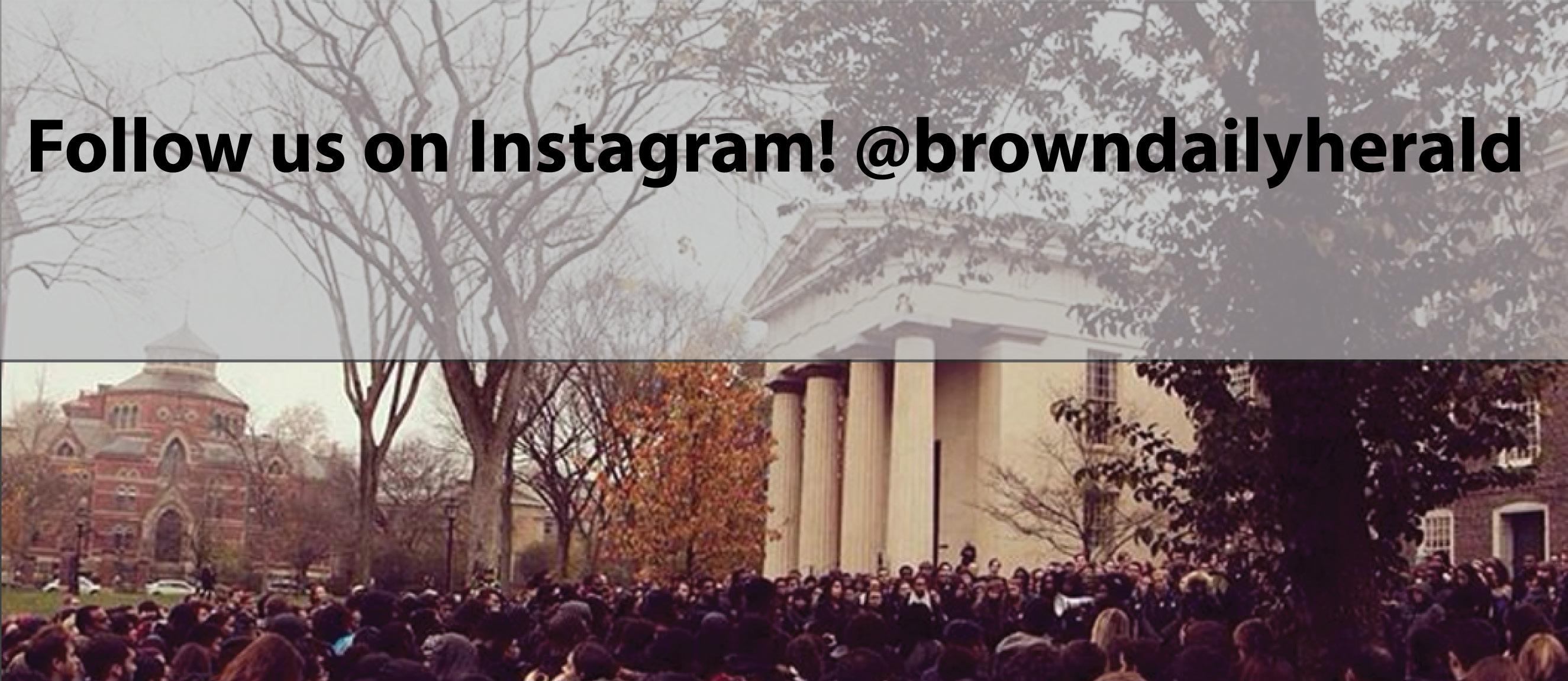
One year ago, Assistant Professors of Mathematics Eric Larson and Isabel Vogt made mathematical history by reaching a breakthrough that had stymied other mathematicians since the 1800s. In a proof published last January, Larson and Vogt solved the interpolation problem — a discovery that Quanta Magazine deemed one of 2022’s most significant mathematical developments.
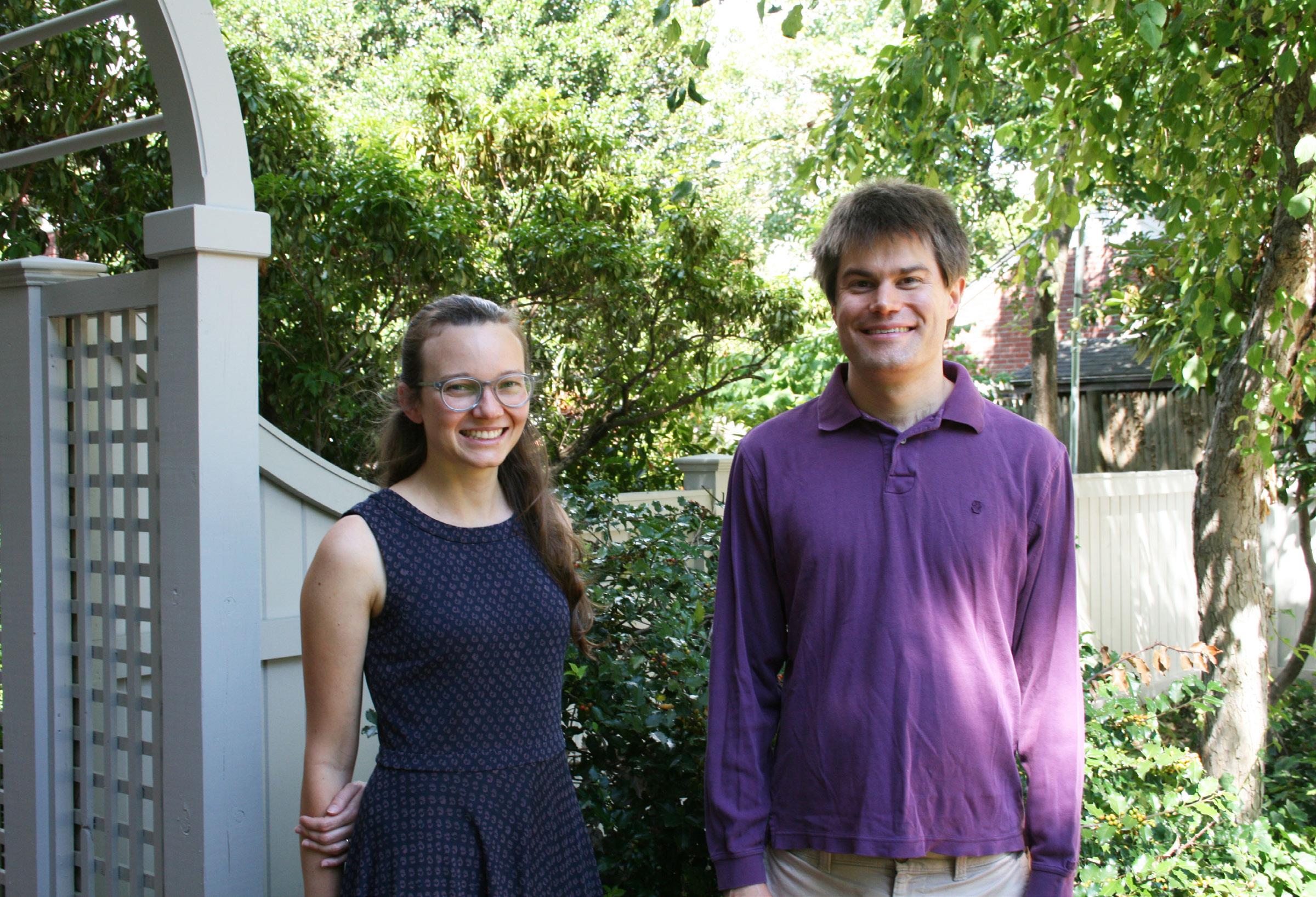
They also happen to be married to each other.
The interpolation problem for rational patches deals with the fundamental nature of curves, Ravi Vakil, a mathematician at Stanford University, told Quanta last summer.
According to Vogt, the interpolation problem addresses the question, “given a random collection of points in some space, when does there exist a curve of a specified type through those points?” she wrote in an email to The Herald.
“The basic examples make this more clear I think: if I make the type be lines in a (two)-dimensional space, then given (two) random points, I can always find a line through those points, but given (three) random points, they won’t lie on a line,” she explained. “So we say that a line interpolates through (two) points.”
Larson and Vogt solved the interpolation problem by figuring out the number of general points that types of curves can pass through “more generally in an arbitrary dimensional space with the possible types of curves that live there,” she said.
Prior to Larson and Vogt’s proof, there were no fully effective methods to solve this problem. But the publication of the proof marked the culmination of years of work by the couple. The two worked on this problem for over a decade, spending considerable time studying interpolation in their graduate school papers at the Massachusetts Institute of Technology, Vogt said.
Though their accomplishment is
best described as a series of smaller breakthroughs rather than one large one, it represents major progress in algebraic geometry and the world of mathematics at large, said Dan Abramovich, professor of mathematics.
For Vogt, the couple’s progress consisted of several small victories which became smaller pieces of a larger puzzle.
“It would be overly simplistic to describe the solution as one moment,” she said. “There was a sequence, coming up with some good ideas or techniques that might help us attack the problem.”
Vogt described the mathematical process as a “slow burn,” recalling meticulous cycles of checking individual details and using a computer to run tens of thousands of tests.
“There was no ‘aha!’ moment,” Larson said. “We would say we had an approach to this problem that feels promising but never really knew how it was going to work out until we were
done.”
The pair ran thousands of cases through a computer program to see if their solution was correct, Vogt said. The computer was unable to check a handful of cases, meaning that the couple had to do “some more interesting math,” she added.
Fortunately, when the pair had a new idea, Larson and Vogt never had to travel too far to try it together, Larson said. “It’s not like I have to say, ‘Let’s meet at the department at 3 p.m.,’ ” he added. “Living together certainly has helped, and we were able to work at odd hours.”
Noting the unique circumstances she and Larson shared, Vogt said she was happy to have been able to share her work with her partner.
“Obviously, your job or your research is a big part of your life, but it’s kind of amazing when another big part of your life, your personal life, intersects” one’s work, Vogt said. “Eric and I are able to talk and understand each
other well. … We understand the other person and have different strengths. It’s a very close relationship, both personally and professionally, and that makes it really nice.”
Abramovich commended the couple’s work together, saying that their achievement came as no surprise to him.
“I was expecting them to do great things because they have already done great things,” Abramovich said. “I was just anxious to see what the next great thing would be in regards to this particular work.”
In 2017, a proof presented by Larson made him a “rising star” in the field of algebraic geometry, according to Quanta Magazine, while Vogt “proved all cases of interpolation … in three-dimensional space” when she was in graduate school.
Abramovich also explained that Larson and Vogt’s solution for the interpolation problem is the culmination of various pieces of their prior work.
“The fact that they have been able to do this after years of steady progress is amazing,” he said. “This is a really big deal — this is a major progress in algebraic geometry and our subject.”
According to Vogt, solving the interpolation problem creates the potential for progress in both real-life and theoretical applications of its underlying concept.
QR codes, Vogt explained, all feature “error-correcting codes,” or codes that can self-correct errors when being read. “The basis for error-correcting codes, from the 1960s to today, is the interpolation problem,” she said. “So it actually really does have practical applications to the things we use in our daily lives.”
“I think the best selling point is (that) we’ve solved a natural fundamental problem in math,” Vogt added. “And because it’s a natural fundamental problem, it’s reasonable to expect that down the line, there might be some other applications.”
2 FRIDAY, JANUARY 27, 2023 THE BROWN DAILY HERALD | NEWS
SCIENCE & RESEARCH
COURTESY OF LORI NASCIMENTO
The couple noted the unique advantages of sharing their work with one another. “It’s kind of amazing when another big part of your life, your personal life, intersects” with one’s work, Professor of Mathematics Isabel Vogt said, adding that the couple consulted one another constantly.
the demonstrators, who “bypassed security barricades, climbed on roofs, smashed windows and invaded all three buildings,” AP News previously reported. While the buildings were largely vacant over the weekend, rioters flooded the ground floor of the Congress building and raided the presidential palace offices.
Demonstrators also destroyed several art pieces on display within the buildings. Many of these pieces held significant historical value, representing the fifteen presidents who have served Brazil since Juscelino Kbuitschek’s presidency from 1956 to 1961, Rogério Carvalho, director of curatorship of the presidential palaces, told BBC News.
“A lot of unique artwork was destroyed,” Dangot said. “It’s just priceless artwork that you can’t ever get back.”
For Roni Wine ’24, an international student from Brazil, the demonstration was jarring, but not surprising. “This was just the cherry on top of a cake that was baked over the past four years,” he said, referencing the growing political polarization in Brazil. “Those who didn’t see it coming chose to close their eyes’’ to reality.
UNIVERSITY NEWS
According to James Green, professor of modern Latin American history, the thousands of rioters who stormed Brasilia represent only a faction of devoted Bolsonaro supporters who did not accept October’s election results.
“They participated because they believed falsely … that the elections were manipulated by (Da Silva) and the Supreme Court,” Green said.
“There’s a lingering force of quite a few people who don’t believe in the current government and will mobilize against it and may attempt other violent actions in the future. … It’s going to be a period of quite a bit of polarization.”
Dangot witnessed this sense of political divide at a personal level. Her family gathered for an annual reunion in São Paulo a few days after the riot and, although no one directly talked about the riot, Dangot described it as “a tense situation.”
She also expressed concerns about the state of Brazil’s democracy going forward. “Brazil hasn’t had the most democratic (or) peaceful political past, so it’s scary to think of what direction we’ll be going in the future,” she said.
“As everywhere in the world … there’s no guarantee for democracy,”
Green said. “The extreme right in Brazil … enter (democratic institutions) to undermine them and to take away peoples’ rights and peoples’ dignity in the process.”
But Green has hope that Brazilian democracy will last despite this threat. “Even though this was a horrible act … the institutions that needed to respond appropriately mostly did,” he said.

For Cherman, that hope depends
on a strong and deliberate response to the riots. Da Silva has detained over 1,500 rioters so far and is conducting an ongoing investigation into Bolsonaro, riot participants and top government and military leaders, according to an article from the New York Times.
“I think people are expecting to see a lot more enforcement (from the government) to make sure that we keep our democratic rights,” Cher-
man said.
Wine echoed Cherman’s sentiment, adding that the nation’s resiliency and recovery from the riot must be an active process.
“We must strengthen our democracy and rebuild our institutions,” he said. “It won’t be easy, but … military-lovers, anti-democratic and far-right politicians and voters will live to see the consequences of their acts.”
Kalāhiki ’24 advocates for Indigenous sovereignty, environmental justice
CNAY-honored climate activist discusses Tribal legislation at White House
BY NEIL MEHTA UNIVERSITY NEWS EDITOR
Kalikoonāmaukūpuna Kalāhiki ’24 holds many titles.
Last year, they served as a coordinator for Natives at Brown, a student organization that fosters community among students with distinct Native and Indigenous identities through cross-cultural activities and workshops.
This year, they are one of two programmers for the Native American Heritage Series, an initiative hosted through the Brown Center for Students of Color that works alongside NAB and the Native American and Indigenous Studies Initiative to host events such as the Spring Thaw Powwow and the Indigenous Peoples Day gathering.
In 2022, Kalāhiki was named a Champion for Change by the Center for Native American Youth at the Aspen Institute. Last fall, they were invited by CNAY to the White House twice: first to moderate a discussion on climate change at the Tribal Youth Forum, and again as part of a roundtable discussion with Tribal leaders at the Tribal Nations Summit.
Kalāhiki identifies as queer and Kanaka Maoli, or Native Hawaiian. They also identify as māhū, or a Native Hawaiian that “embodies both kāne (man) and wahine (woman) energies,” they said. As a climate activist and community organizer, much of Kalāhiki’s work “is tied to those identities,” they added.
Kalāhiki spoke to The Herald about their advocacy on and off campus, as well as their hopes for the future of Native and Indigenous student communities at Brown.
Indigenous environmentalism
Kalāhiki’s activism centers around “environmental justice, Indigenous sovereignty, liberation and self-determination,” they said. “I’m really trying to uplift the value of Indigenous knowledge systems, specifically within the context of climate change.”
According to Kalāhiki, while Western environmentalism focuses on the creation of nature preserves “where humanity can’t go inside and can’t touch it,” Indigenous environmentalism allows for a cultivation of land, where humans participate actively in the ecosystem.
Climate change activism “has to be localized,” Kalāhiki added. “As Indigenous Peoples, we need to be given the power — or we’re going to take back the power — to control our lands.”
“We’ve lived on these lands for thousands of years, so we know intimately what she needs and the ways we can care for her,” they added. “We’re always thinking for the future, whereas capitalism is a lot of ‘How can we maximize profit now? How can we extract enough resources to make sure that our pockets can get fatter and deeper?’ ”
From Providence to Washington D.C.
Twice last fall, Kalāhiki brought their advocacy efforts for Indigenous sovereignty to Washington.
They were first invited to moderate a panel on climate change as part of the White House Tribal Youth Forum, held jointly with CNAY. The forum aims to “connect and talk to these different representatives across different levels of government,” Kalāhiki said.
During the panel, Assistant Secretary of the Interior for Indian Affairs Bryan Newland and NativesOutdoors founder Len Necefer discussed the Department of the Interior’s initiatives and Necefer’s work to promote Indigenous sovereignty.
Kalāhiki was one of two Pacific Islanders at the event and the only Hawaiian attendee, they said. At the
event, Kalāhiki discussed the U.S. Navy’s Red Hill Pipeline in Hawaii, which transports jet fuel “only a hundred feet above one of our island’s main aquifers.”
“My culture and identities as a Pacific Islander aren’t represented in these spaces very often,” Kalāhiki said. “Being able to bring our story to this space was really special, because I was able to talk about water and land rights back home.”
Following the forum, Kalāhiki was again invited to the White House for the annual Tribal Nations Summit, which provides “a robust and meaningful engagement with Tribal leaders on important issues facing Tribal communities,” according to the event announcement.
At the event, Kalāhiki and other young representatives met with Tribal leaders to discuss contemporary issues
issues, the summit allowed members “to share our experiences in that space and talk about strategies to address the needs of our people,” Kalāhiki said.
Cheyenne Brady, senior program manager at CNAY, wrote in an email to The Herald that Kalāhiki is “passionate about uplifting all Peoples and takes great pride in their Hawaiian culture. They bring their true self and speak to the needs of their community, providing context but also promoting possible solutions.”
Youth representatives at CNAY “are selected because of their passion to create positive impacts for Indigenous Peoples and their respective communities,” Brady wrote, adding that Kalāhiki “is truly a great leader.”
Reflecting on the summit, Kalāhiki said that youth in intergenerational spaces are often reduced to “leaders of
when students were sent home.
“Last year, we were coming back from the pandemic, and the Native community had completely fallen apart,” they said. “The purpose of last year was to rebuild the community (and) be in shared space.”
In the past, both Kalāhiki’s advocacy and Native and Indigenous activism on campus focused more broadly on visibility on campus, they said. “So much of what we did was to push the University to finally see us,” Kalāhiki said, citing the student-led push for Brown to recognize Indigenous People’s Day.
Following the return to campus, Kalāhiki highlighted the need to “show up for ourselves, exist as a community and just experience joy with each other,” they said. “A lot of our programming was about what we can do to build connections between people in our community and celebrate who we are as Native Peoples.”
“I have grown to view NAB as my family,” wrote Ashlyn Lovato ’23, former Native American Heritage Series programmer, in an email to The Herald. “So Kaliko has become like one of my siblings.”
affecting Indigenous Peoples, including food sovereignty, intergenerational connections, mental health and the Indian Child Welfare Act.
ICWA “makes sure that Native kids can stay with Native families,” Kalāhiki explained. The act establishes “minimum Federal standards for the removal of Indian children and placement of such children in homes which will reflect the unique values of Indian culture,” according to the Department of the Interior website. The constitutionality of the act was recently challenged in Haaland v. Brackeen, which expects a ruling by the Supreme Court this year.
In addition to discussing pressing
tomorrow” due to lack of experience. But because Kalāhiki and their peers take on essential roles as community advocates, they feel this description isn’t entirely true.
“We’re not leaders of tomorrow,” Kalāhiki said. “We’re leaders of today.”
Building community on campus
On campus, Kalāhiki continues their advocacy by creating community space for Native students. From their former role as NAB coordinator to their current position as Native American Heritage Series programmer, Kalāhiki has focused specifically on rebuilding the sense of community lost after the University’s initial COVID-19 response,
“I am very proud of their success and accomplishments, their ability to be a voice for their identified communities and to continue to fight for what NAB needs in order to maintain wellbeing and find success at this institution,” Lovato wrote. “Kaliko is selfless and truly embodies the core values of a leader.”
After two and a half years of advocacy and organizing, Kalāhiki said they are “burnt out” but remain optimistic about the future of the Native student body at Brown.
“I’m excited for the ways that our communities continue to grow,” they said. “Because every year, there are more Native students that are admitted and who are eager to help.”
This article was originally published online Wednesday, Jan. 25.
FRIDAY, JANUARY 27, 2023 3 THE BROWN DAILY HERALD | NEWS
RIOTS FROM PAGE 1
ASHLEY CHOI / HERALD
“We’re not leaders of tomorrow. We’re leaders of today.”
Despite its severe side effects, “standard hospital protocols for drug testing do not detect xylazine,” making it hard to understand xylazine rates nationally, Wightman wrote. Nationally, researchers have warned they are likely underestimating the number of xylazine overdose deaths.
The state’s Office of the Medical Examiner does not “currently test for xylazine in their drug screening panels,” but is working to add xylazine to future panels, wrote Joseph Wendelken, a spokesperson for the Rhode Island Department of Health, in an email sent to The Herald.
‘Knowing what’s in the supply’: Creating local knowledge
A need for immediate knowledge about the drug supply was a key reason for testRI’s founding, according to Claire Macon, a research assistant at the School of Public Health who conducted much of testRI’s sample collection.
The project aims to “understand what we’re seeing in local Rhode Island drug supplies … and share that information with people as quickly as possible so they have additional
knowledge to make the decisions that are right for them,” Collins said. To do so, testRI interviews study participants and collects drug samples from “anonymous community members and community partners,” she said.
Wendelken, though, wrote that testRI’s samples make up a small proportion of the state’s drug supply: “These results may not represent the broader drug supply in the state,” he wrote.
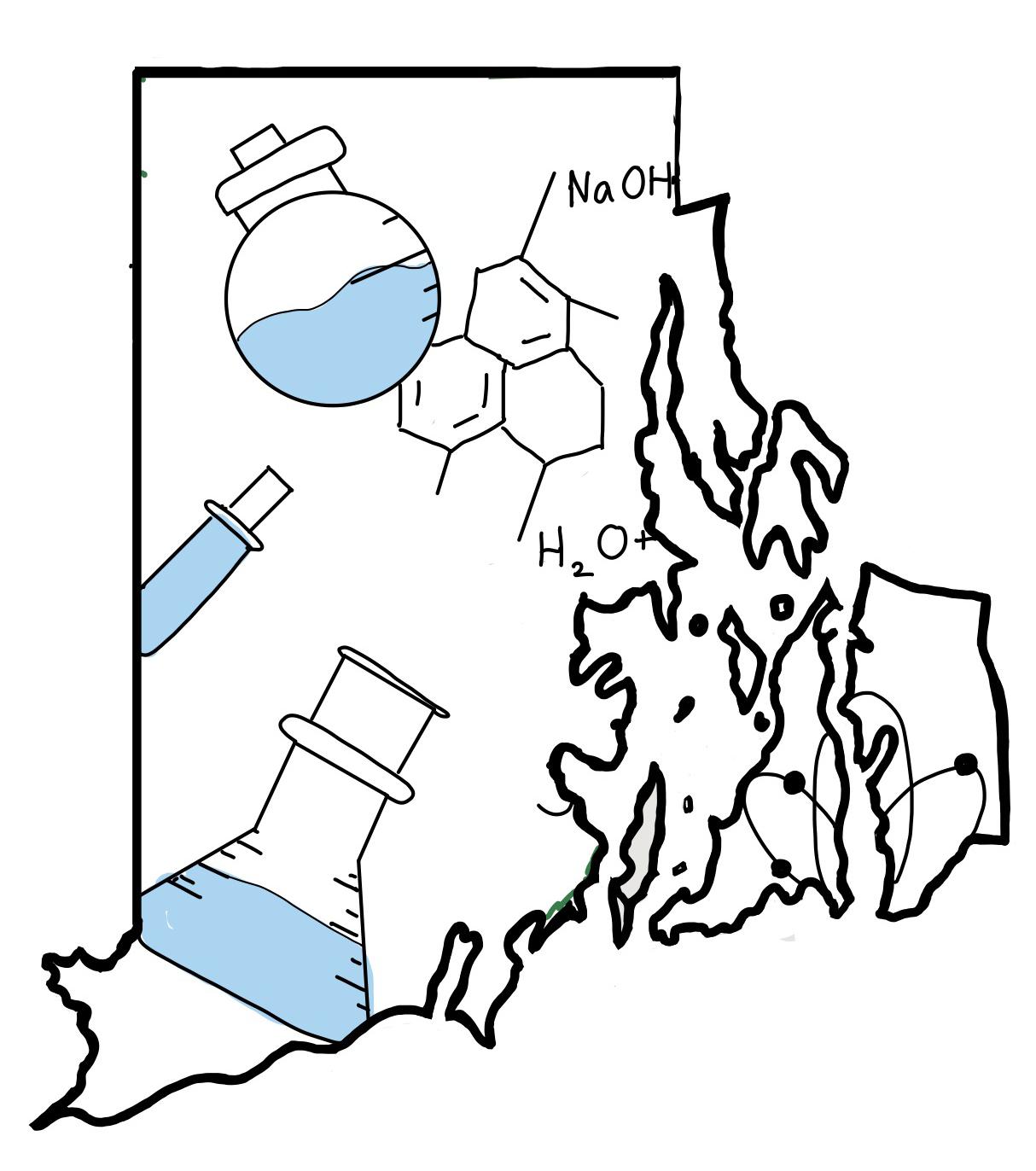
For Macon, the benefit of testRI “is knowledge sharing and information sharing.” Unlike a traditional study, in which those who volunteer substances would see the results of their test “in someone’s paper ten months down the line,” participants can “access the results” on a faster timeline, she said.
Sharing information, Macon said, also means making it accessible for those who need to see it. To reduce “barriers to entry,” testRI created a zine — a small, specialized publication — of basic information about xylazine in October.
“We take information and make it legible, make it accessible, make it concise and we make people feel okay to access it,” she said. The zine is available on Twitter and Instagram,
as well as on the testRI website.
“The feedback we’ve gotten from people who are participants and people in the community is that having this information has been really helpful,” Collins said. “Knowing what is in the supply … has impacted some of their practices.”
Although testRI has made progress in informing the Ocean State, many people locally and nationally “don’t know what xylazine is,” Collins said. “Without comprehensive testing, it’s hard to assess what’s in the supply and the potential implications that may have.”
Collins advocated for investing in harm reduction and evidence-based interventions like overdose prevention centers, drug testing and substance decriminalization, which she said she believes will reduce the risk of fatal overdoses.
“Expanding opportunities for people to test their substances before they use them can be really powerful,” she said.
Wendelken also stressed the importance of employing prevention measures at an individual level. Even though naloxone doesn’t reverse the effects of xylazine, he wrote, “it is also important for people to carry
naloxone, as drugs that have xylazine in them very often have fentanyl too.”
Macon also stressed the importance of addressing “continued content contaminants … in a com -
prehensive way that really centers what folks need.”
“It’s not the first and it’s not the last contaminant that we’ll see,” she said.
he has noticed many such students at Brown, he has found few spaces at the University designated specifically for them.
According to Darden, MASH provides a setting for students to engage in discussions about their identities and issues present in mixed API communities. “We seek to create a community where people can just
meet (each other) that have similar backgrounds,” he said, adding that many students with mixed API identities bond over common “feelings, sentiments and experiences” about their positionality.
Pearson wrote that the group primarily holds two types of events, discussions and socials. At discussion meetings, members address personal experiences with their identities, such as imposter syndrome, dating
and anti-Asian racism. In social meetings, members can make new friends, bonding over activities like cooking workshops, craft nights and movie nights.
Hosting both types of meetings “brings a lot of vulnerability and a deeper sense of community to our club,” Pearson wrote. The group uses the combination to share the “joys and struggles that are often unique to mixed API.”
CALENDAR
This spring, alongside Brown’s Organization of Multiracial and Biracial Students — another campus group for students with multiracial identities — MASH will organize Loving Week, a celebration commemorating the Loving v. Virginia case that declared laws prohibiting interracial marriage unconstitutional.
The group is also building connections across campus through collaborative events with other student
TODAY’S EVENTS
After Hours Annual Staff Exhibition, Brown Arts Institute
All day Granoff Center for the Creative Arts
Brown University Women’s Ice Hockey vs Clarkson – Beanie Giveaway 6:00 pm

Meehan Auditorium
TOMORROW’S EVENTS
Brown University Men’s Tennis vs Fordham
10:00 am
Pizzitola Sports Center
Brown University Women’s Basketball vs Cornell – Pizza Day 12:00 pm
Pizzitola Sports Center
organizations, Dea said, citing future events with the Brown Filipino Alliance and Brown Outing Club.
“While general API groups have always been more than welcoming to me, I never felt completely comfortable sharing the whole range of my identity in those places,” Pearson wrote. “MASH is a group that I feel like I truly fit into, without having to add in disclaimers or feel like I don’t relate, and that’s a really special feeling.”
Positive Exposure: Change How You See Lecture
6:00 pm
Warren Alpert Medical School, Room 270
Brown/Trinity Rep Production of WOLF PLAY by Hansol Jung
7:30 pm
Pell Chafee Performance Center, Citizens Bank Theater
Brown University Women’s Ice Hockey vs St. Lawrence 3:00 pm
Meehan Auditorium
EPH Prospective Members Dinner + Dessert 6:30 pm
111 Brown Street
4 FRIDAY, JANUARY 27, 2023 THE BROWN DAILY HERALD | NEWS
JANUARY S F Th W Tu M S 11 10 9 12 6 7 8 18 17 16 19 14 15 13 25 24 23 26 21 22 20 29 27 28 4 5 1 2 3 30
31
MASH FROM PAGE 1
TRANQUILIZER FROM PAGE 1
SIMONE STRAUS / HERALD
Prince Harry’s memoir ‘Spare’ offers more than royal family slander
Duke of Sussex’s controversial literary debut reveals journey of personal growth
BY DAPHNE DLUZNIEWSKI SENIOR STAFF WRITER
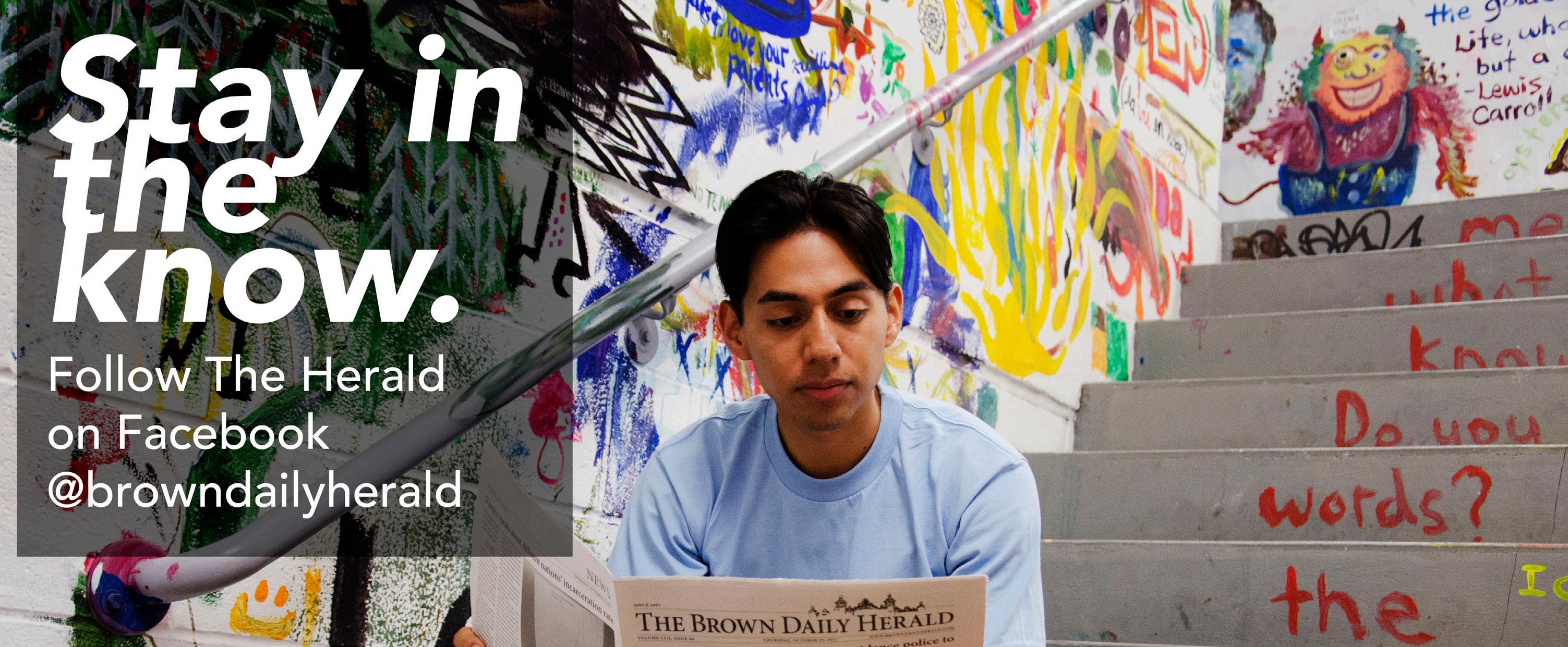
Prince Harry may have been the spare — or the second-in-line behind the heir, his older brother Prince William — to the throne, but he is certainly reigning supreme in the global spotlight. Harry’s highly-anticipated memoir, “Spare,” made its explosive debut on Jan. 10, setting a record of 1.43 million sales on the first day of its release. Excerpts that leaked prior to publication fueled the book’s popularity, enticing readers worldwide with the promise of more morsels of royal gossip.

“Spare” fulfilled this promise with scathing salvos directed towards the British press, unforgiving representations of the prince’s family and much-too-personal information about his nether regions. Yet to focus only on the scandalous elements of the memoir would be a grave mistake. While Harry’s experience inside his so-called “gilded cage” of the British monarchy is unrelatable for most, he illuminates a universal journey of grief, healing and belonging. Harry’s honest narration and steadfast commitment to detail offer an elevated, more candid account of the stories British tabloids have used to exploit him for decades.
One of “Spare’s” most stunning qualities is its vivid descriptions of setting. Through phenomenal memory
and masterful attention to detail, Harry and his ghostwriter, J.R. Moehringer, open the memoir on a quiet summer day in Balmoral, Scotland, the site of the Queen’s summer home. The picturesque recollection of the spacious estate and beautiful landscape is shattered as he describes learning that his mother, Princess Diana, has died in a car crash in Paris.
Loss is a difficult emotion to put into words, but “Spare” manages to do so in a poignant and eloquent fashion. By retelling his experience from the perspective of his young, grieving self, Harry invites readers to be present in that formative moment. This unique stylistic perspective allows readers to struggle, grow and mature with Harry throughout his personal journey.
“Spare” explores Harry’s shifting perspectives by describing his experiences from three parts of his life: as a young boy grappling with despair and feelings of inadequacy, as a soldier slowly learning his purpose and as a husband and father striving to hold himself and others to a higher standard.
One unifying element of these three sections is Harry’s hatred for the press and paparazzi. He interrupts jovial stories by inserting dramatic headlines ranging from mocking a bad haircut to accusing him of having a drug addiction and cheating. Harry challenges readers to experience this harassment through the eyes of his teenage self, forcing them to reevaluate their complicity in invading the privacy of those in the gilded cage. The book’s first section ends with a promise of hope for Harry as he hopes to find relief from both the media’s scrutiny and his internal
struggles by joining the military.
The book’s second part leaves these hopes partially unrealized and offers the least compelling portion of the narrative. Harry seeks to explain how the military gave him a newfound sense of belonging while noting how the press ruined his chances for a typical service experience, but his exhaustive descriptions of military equipment and missions muddle this sentiment.
But the image of a royal on psychedelics helps revive readers — and reestablish his depth of personality — after a dreary war narrative. Harry offers a refreshing transition into Part Three by sharing a story of a mushroom trip. As he sits on the beach, the moon begins speaking to him, assuring him that the year to follow would be a good one.
Sure enough, a few months later, he meets his future wife, Meghan Markle.
The final part of the memoir focuses on Harry’s courtship with Meghan and subsequent fallout with the rest of the royal family. It unravels into a bashing of his adversaries, especially a press core he accuses of racism and his complicit family members.
But this ending distracts from the main point of Harry’s memoir: addressing the toxicity of the media and explaining how his decision to leave the throne was to protect his family. Through emotional descriptions of Meghan’s struggle with suicidal thoughts and his struggles to protect her and his children, Harry forces the public to question the dehumanization of famous figures for entertainment value.
Ironically, Harry’s denunciations of the press, and his family’s cooperation with them, have generated negative
chronicles Harry’s life stages: feeling inadequate in boyhood, finding purpose as a soldier and becoming a husband and father.
backlash from — you guessed it — the press. News outlets accuse Harry of lying about certain details of his book, attempting to discredit his entire narrative. Others have suggested that the book shared too many details, catalyzing popular support for the stripping of his royal title.
Clips of the audiobook version of “Spare” have also circulated widely online as Prince Harry reads in depth about his private parts suffering from frostbite. While many criticize these details as too intimate and slightly disturbing, Harry’s willingness to be
vulnerable adds a necessary layer of comedy and honesty that makes this book memorable. His courage to share the gritty, unglamorous elements of his story conveys a sense of authenticity and humanity.
“Spare” is more than an explosive blow against Buckingham Palace. It is an invitation to rethink our treatment of others in a world of gossip and clickbait. It is a reminder that no one is spared from human struggles. Most of all, it challenges us to question how much we are willing to sacrifice to protect those we love.
’25 scored, assisted by both Krys and Ryan Bottrill ’26. A Dartmouth goal late in the period gave the Big Green momentum with the game tied 3-3 as it entered the 3rd period.
Despite scoring only one goal, Dartmouth dominated the third period, firing 14 shots on goal to Bruno’s three. The Big Green dealt the decisive blow with eight minutes remaining in the game, taking a 4-3 lead and sealing the Brown defeat.
“Dartmouth worked extremely hard and played a physical game,” wrote defenseman Spence Evans ’25
in a message to the Herald. “It made it difficult for us to execute our game plan.”
“I think Dartmouth played very well as a team and beat us at our own game,” forward Brendan Clark ’25 wrote in a message to the Herald. Their play was “very structured and (they) outworked us.”
‘ A huge win’: Brown 3, Harvard 2
The following day, the Bears bounced back with a 3-2 victory over a Harvard team ranked in the top 10 nationally.
“Harvard games come with extra importance, and coupled with the
loss against Dartmouth, our team was motivated to play a good game,” Evans wrote.
An early goal by Bradley Cocca ’23 made it clear that the Bears would not roll over against their highly-ranked rivals. A quick response from Harvard tied the game at one apiece less than four minutes into the game, but both offenses were held in check for the remainder of the period.
Brown managed two goals in the second period — scored by James Crossman ’23 and Ryan Shostak ’26 — to take a commanding 3-1 lead.
The Crimson finally showed their hand in the third period — their of-
fense began to attack with prowess — but the Bears defense proved near-impenetrable. Brown’s blockers hindered Harvard’s efforts to take quality shots, and when the Crimson were able to do so, Mathieu Caron ’25 managed to keep the puck out of the net. Caron made 27 saves on the night and 18 in the third period alone.
“I thought we played really, really good defense and when they turned it up in the third a little bit Caron was there,” Whittet said.
The Crimson did manage to score late in the period after emptying their net, but by that point it was too late
to prevent a 3-2 Bears victory. The game marked a dominant defensive performance from Brown against Harvard’s strong offense, which is ranked seventh in scoring percentage in the NCAA.
“We always place an emphasis on what we need to do to improve as a team to play at our highest level,” Clark wrote. “When we do that, we feel that we can beat any opponent that we face.”
“It was a good response after (Friday) night against one of the best teams in the country,” Whittet said. “It’s a huge win.”
FRIDAY, JANUARY 27, 2023 5 THE BROWN DAILY HERALD | NEWS
ARTS & CULTURE
DAPHNE DLUZNIEWSKI / HERALD “Spare”
HOCKEY FROM PAGE 1
University names long-time financial aid staffer Sean Ferns interim dean
Search committee for permanent replacement does not yet have timeline
BY OWEN DAHLKAMP
SENIOR STAFF WRITER
The University appointed Sean Ferns as its interim dean of financial aid in December, according to a Dec. 13 Today@Brown Announcement.
Ferns’s appointment follows the retirement of former Dean of Financial Aid Jim Tilton at the end of 2022. Tilton announced his retirement in August 2022, The Herald previously reported.
Previously, Ferns served as the senior director of operations and systems in the Office of Financial Aid. According to the announcement, he is committed to “financial aid across student levels and mak(ing) a Brown education more accessible to students from every income background.” Ferns declined to respond to a request for comment from The Herald.
Before arriving at Brown, where he has worked for 16 years, Ferns worked in financial aid at the University of Rhode Island, Salve Regina University and Bryant University, according to the announcement.
A search committee has been formed to find a full-time replacement for Tilton, according to the announcement. It will be chaired by Logan Powell, associate provost for enrollment.
The committee includes deans from across the University’s different schools — including the College, the School of Public Health and the Warren Alpert Medical School. Two other administrators, an undergraduate student and a graduate student will also serve on the committee.
Yohan Mutta ’23, a student ambassador for the Office of College Admission, will serve as the undergraduate representative. Powell offered him the opportunity following his work as an ambassador and tour guide, Mutta wrote in an email to The Herald.
Mutta wrote he would prioritize candidates who will support and implement many of the University’s re-
cent financial aid initiatives, including need-blind admissions for international students and expanded financial aid for middle-income families.
He added in the email that he will look for “someone with a vision or
ideas on how to implement these initiatives but also conscious of finding and resolving gaps that exist within the current financial aid system.”
Powell told The Herald that the committee has yet to convene or com-
pile a list of candidates. He emphasized that the committee is still in “very early stages.”
The search committee has yet to announce their timeline for selecting a replacement for Tilton.
SINCE 1891
THE BROWN DAILY HERALD
133rd Editorial Board
Editor-in-Chief
Will Kubzansky
Managing Editors Katy Pickens
Alex Nadirashvili
Senior Editors Augustus Bayard
Caleb Lazar
Peter Swope
Kaitlyn Torres
post-magazine
Editor-in-Chief Kimberly Liu
News
Metro Editors Emma Gardner
Rhea Rasquinha
Jacob Smollen
Julia Vaz
Science & Research Editor

Haley Sandlow
Senior Science & Research Editor
Gabriella Vulakh
Arts & Culture Editors
Aalia Jagwani
Finn Kirkpatrick
Rya Vallabhaneni
Sports Editor
Linus Lawrence
University News Editors
Sofia Barnett
Charlie Clynes
Emily Faulhaber
Grace Holleb
Sam Levine
Neil Mehta
Haley Sandlow
Kathy Wang
Digital News Director of Technology
Swetabh Changkakoti
Opinions
Head Opinions Editor
Alissa Simon
Opinions Editors

Anika Bahl
Bliss Han
Melissa Liu
Jackson McGough
Multimedia Illustration Chief
Ashley Choi
Photo Chiefs
Elsa Choi-Hausman
Dana Richie
Photo Editors Mathieu Greco
Rocky Mattos-Canedo
Social Media Chief
Sahil Balani
Social Media Editors
Julian Beaudry
Emily Faulhaber
Kaiolena Tacazon
Production
Copy Desk Chief
Brendan McMahon
Design Chief
Neil Mehta
Design Editors
Sirine Benali
Maddy Cherr Gray Martens
Business General Managers
Joe Belfield
Andrew Willwerth
Sales Director Alexander Zhou
Finance Director Eli Pullaro
Submissions: The Brown Daily Herald publishes submissions in the form of op-eds and letters to the Op-eds are typically between 600 and 900 words and advance a clear argument related to a topic of campus discourse. You can submit op-eds to opinions@browndailyherald.com.
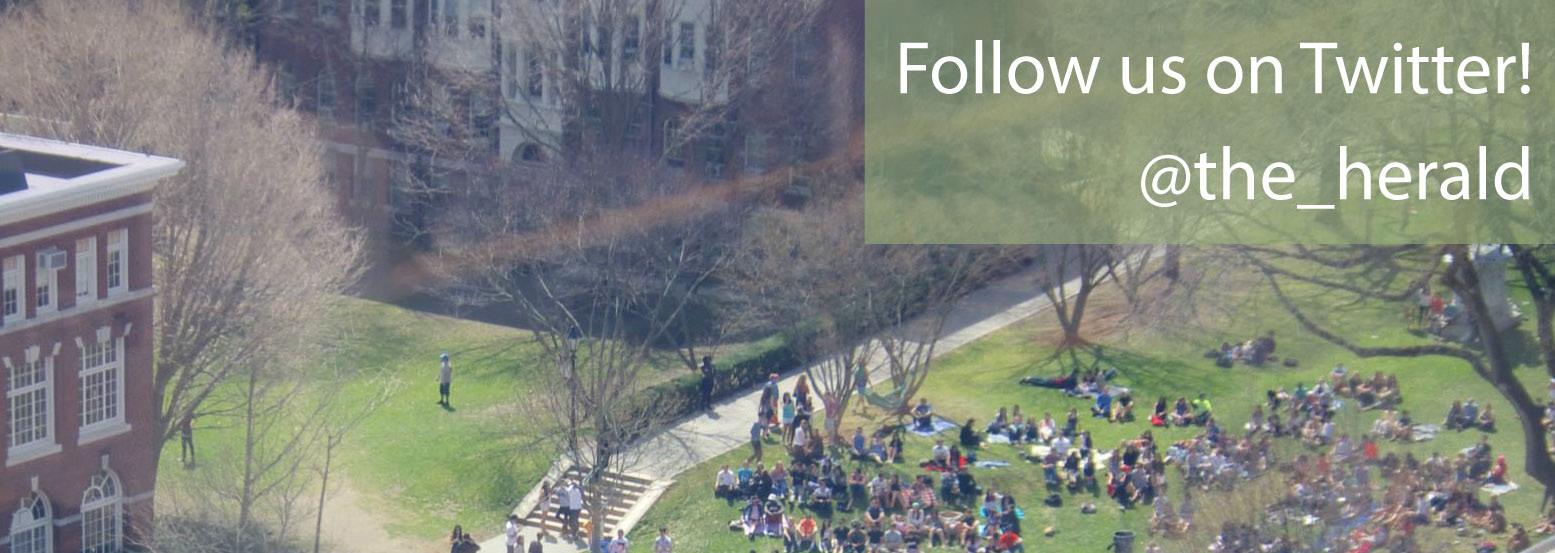
Letters to the editor should be around 250 words and respond to an article or column that has appeared in The Herald, or critique or commend The Herald’s editorial decisions. You can submit letters to the editor to letters@browndailyherald.com.
Submissions undergo multiple rounds of editing. These rounds of editing generally take place over the course of one evening, and you may have to respond to edits late in the evening. If you know you will be unable to do so, please mention that in your email, and we will do our best to work with you.
Submissions can build on reporting from The Herald, reporting elsewhere, official statements from the University or other groups and other reputable sources, but they cannot break news or contain information that The Herald cannot verify. Because we cannot publish unsubstantiated information, failure to provide appropriate sources may mean we have to modify or remove unverified claims.
The Herald will not publish anonymous submissions or submissions authored by organizations. Leaders of student organizations can be identified as such but cannot write under the byline of their organization.
The Herald cannot publish all submissions it receives and reserves the right to edit all submissions.
All submissions to The Herald cannot have been previously published elsewhere (in print or online — including personal blogs and social media) and must be exclusive to The Herald. Once your submission is published in The Herald, The Brown Daily Herald, Inc. owns the copyright to the materials.
Commentary: The editorial is the majority opinion of the editorial page board of The Brown Daily Herald. The editorial viewpoint does not necessarily reflect the views of The Brown Daily Herald, Inc. Columns, letters and comics reflect the opinions of their authors only.
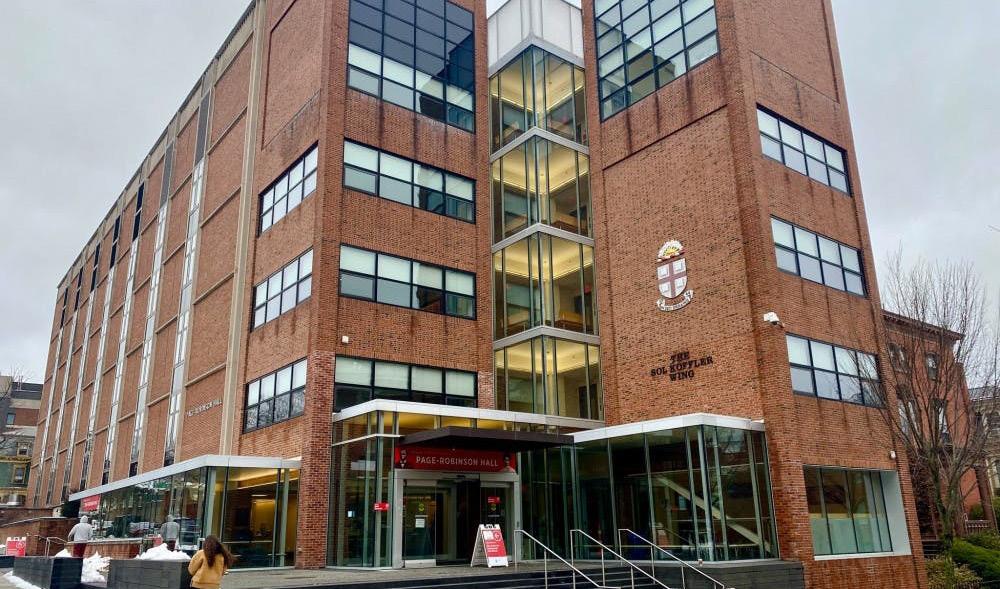
Corrections: The Brown Daily Herald is committed to providing the Brown University community with the most accurate information possible. Corrections may be submitted up to seven calendar days after publication. Periodicals postage paid at Providence, R.I. Postmaster: Please send corrections to P.O. Box 2538, Providence, RI 02906.
Advertising: The Brown Daily Herald, Inc. reserves the right to accept or decline any advertisement at its discretion.
@the_herald facebook.com/browndailyherald
@browndailyherald @browndailyherald
88 Benevolent, Providence, RI (401) 351-3372 www.browndailyherald.com Editorial: herald@browndailyherald.com Advertising: advertising@browndailyherald.com
The Brown Daily Herald, Inc. is a financially independent, nonprofit media organization bringing you The Brown Daily Herald and Post- Magazine. The Brown Daily Herald has served the Brown University community daily since 1891. It is published Monday through Friday during the academic year, excluding vacations, once during Commencement and once during Orientation by The Brown Daily Herald, Inc. Single copy free for each member of the community. Subscription prices: $200 one year daily, $100 one semester daily.
Copyright 2023 by The Brown Daily Herald, Inc. All rights reserved.
FRIDAY, JANUARY 27, 2023 THE BROWN DAILY HERALD | NEWS
6
UNIVERSITY NEWS
DANIELLE EMERSON / HERALD
The search committee is made up of deans from the Schools of Public Health and Professional Studies, as well as undergraduate and graduate student representatives.
Sender ’25: Brown has enough parking — it just has to use it
For years, Brown has struggled to accommodate the parking needs of faculty and students. The available parking spots are currently allocated through a waitlist system and are ostensibly highly limited; in 2021, only around 50 juniors and seniors were granted parking spaces in this way. But closer inspection of Brown’s assets reveals that parking should not be the issue it has become for faculty, staff and students. The University has plenty of preexisting resources, including many underused lots, that could be reutilized to patch short-term holes in parking availability before Brown pivots to a new model.
The University’s current parking distribution system is complex and requires applying for a waitlist just to earn the privilege of paying hundreds of dollars for a parking pass. This flawed system has another significant impact on campus life and the surrounding community that goes beyond creating inconvenience and financial burdens for students. Parking regimes like the University’s can create traffic as vehicles circle blocks searching for spots and reduce the space available to neighborhood residents as visitors elect to park on cityowned streets.
If Brown is willing to critically evaluate its current system, it could provide significantly more parking with assets it already owns and pays for. One of the University’s most significant parking holdings is the Brown Stadium lot north of campus. This lot has at least 150 spots and is possibly the largest untapped parking resource the University owns — save for gamedays, it remains vacant almost every day of the year. While this lot is not within walking distance of the main campus, especially for daily commuters, Brown can employ another underutilized resource to help: the campus shuttle. By organizing consistent shuttle transportation between the lot and the main campus, a trip which normally takes about 10 minutes, the University would be able to effectively circulate
commuters between the lot and campus. Brown should have no logistical issue diverting shuttles to the lot every 10 minutes throughout the day, as it already does so for game days without causing any significant disruption to service elsewhere around campus.
This plan would not be too cost-prohibitive as the University already has nearly everything it needs to implement it. Brown might have to pay a small price to construct a covered shelter for commuters or increase the amount they spend on the shuttle system to pay additional drivers, but these are hardly large outlays considering the continued demand for additional campus parking.
Brown should also consider finding ways to fill lots that are underutilized — walking by the Olney-Margolies Athletic Center or looking out the windows of the John D. Rockefeller Library, I’ve noticed consistently empty spaces in the adjacent lots. If those spaces do often sit empty, Brown must flexibly reallocate them.
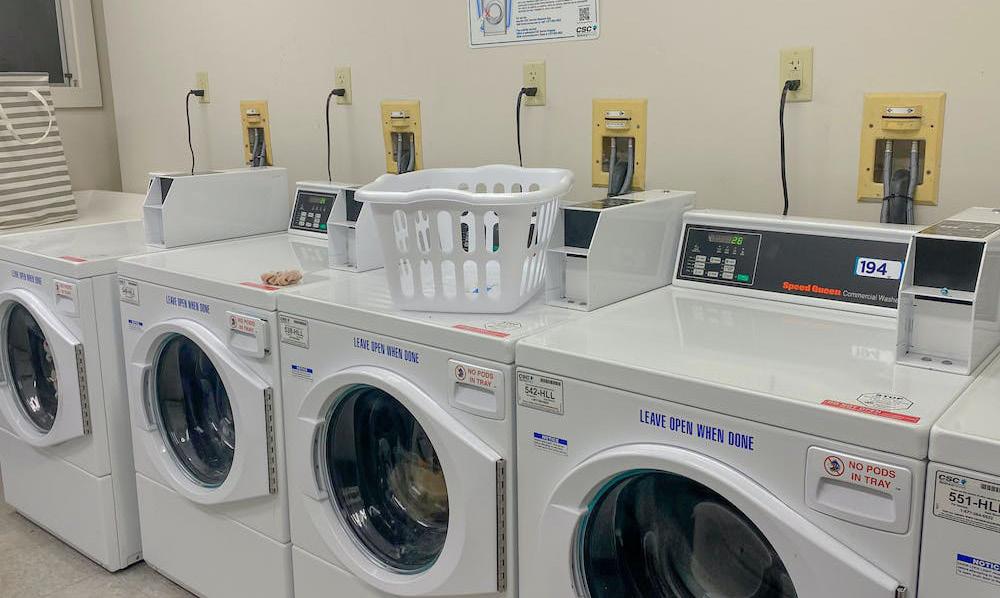
These short-term solutions are particularly attractive since they can be implemented immediately, to great effect and at next to no capital cost. Commuters currently struggling with this issue should not need to wait years for a potential new parking facility to be built, and
Brown could quickly ease any stress on surrounding streets caused by their current allocation of parking.
But Brown must also embrace a paradigm shift in the way it thinks about parking in order to come up with a long-term solution. Students at many schools, both urban and suburban, struggle with parking, but many schools are doing more to meet the demand of their commuters than Brown. Schools large and small have recognized the need for parking not immediately adjacent to their main campuses and have seen success with shuttle services or simply longer walks from parking to campus destinations. Schools like the University of Michigan at Ann Arbor have embraced this strategy and have made their larger parking facilities stops on their many campus shuttle routes. Likewise, smaller universities have relocated their many smaller lots to single large garages, like Wellesley College, which replaced its previous facilities with a 566-space ramp, allowing for the ecological restoration of many parts of campus.
Brown should not fall behind its peers in this regard. In the near term, the University should open any underused lots, but not disregard the importance of building a large multi-level facility to permanently end the
DEAR PHOTOGRAPHER
parking issue. There are a number of places where this could be effectively implemented, such as large surface lots around the athletic facilities. Doing so would provide a large parking facility in an unobtrusive area for the neighborhood and allow for suitable parking within walking distance of campus.
The benefit of implementing both shortterm and long-term campus parking solutions would be enormous. It would free up street space for pedestrians, bicyclists and other forms of transportation. Additionally, it would reduce traffic, as there would be fewer drivers hunting for on-street parking.
Furthermore, it would allow Brown to pursue its development goals more effectively. As the University continues to expand its built footprint, it often replaces on-campus parking with new facilities. One of the new dorms on Brook Street, for example, was built on a large University-owned lot. The same can be said for Sternlicht Commons — the dorm often referred to as Wellness. By providing adequate parking apart from the main campus, Brown can engage in infill development, filling space formerly occupied by surface lots made obsolete by new off-campus parking without displacing any existing structures in the community.
Brown should demonstrate its dedication to resolving its parking problems as soon as possible by taking the first step of providing easier access to their underused lots. Then, it can take long-term steps to rethink campus transportation by moving parking off campus and lifting the roadblocks hindering further development.
Gabe Sender ’25 can be reached at gabriel_ sender@brown.edu. Please send responses to this opinion to letters@browndailyherald. com and other op-eds to opinions@browndailyherald.com.
FRIDAY, JANUARY 27, 2023 7 THE BROWN DAILY HERALD | COMMENTARY
“Brown must also embrace a paradigm shift in the way it thinks about parking in order to come up with a long-term solution.”
A loose sock in the photo? Or is it a hair scrunchie? How unprofessional! We were expecting more from you. Much disdain, Photographer (the same one) JULIA VAZ / HERALD
U. to expand kosher, allergy-friendly, halal options at Sharpe Refectory
Deborah Cherman ’25, who eats kosher at Brown, said that she was excited about the new constructions, despite no longer being on a meal plan. Cherman has friends who are “still on the kosher meal plan and are even more excited than I am about the” renovation.
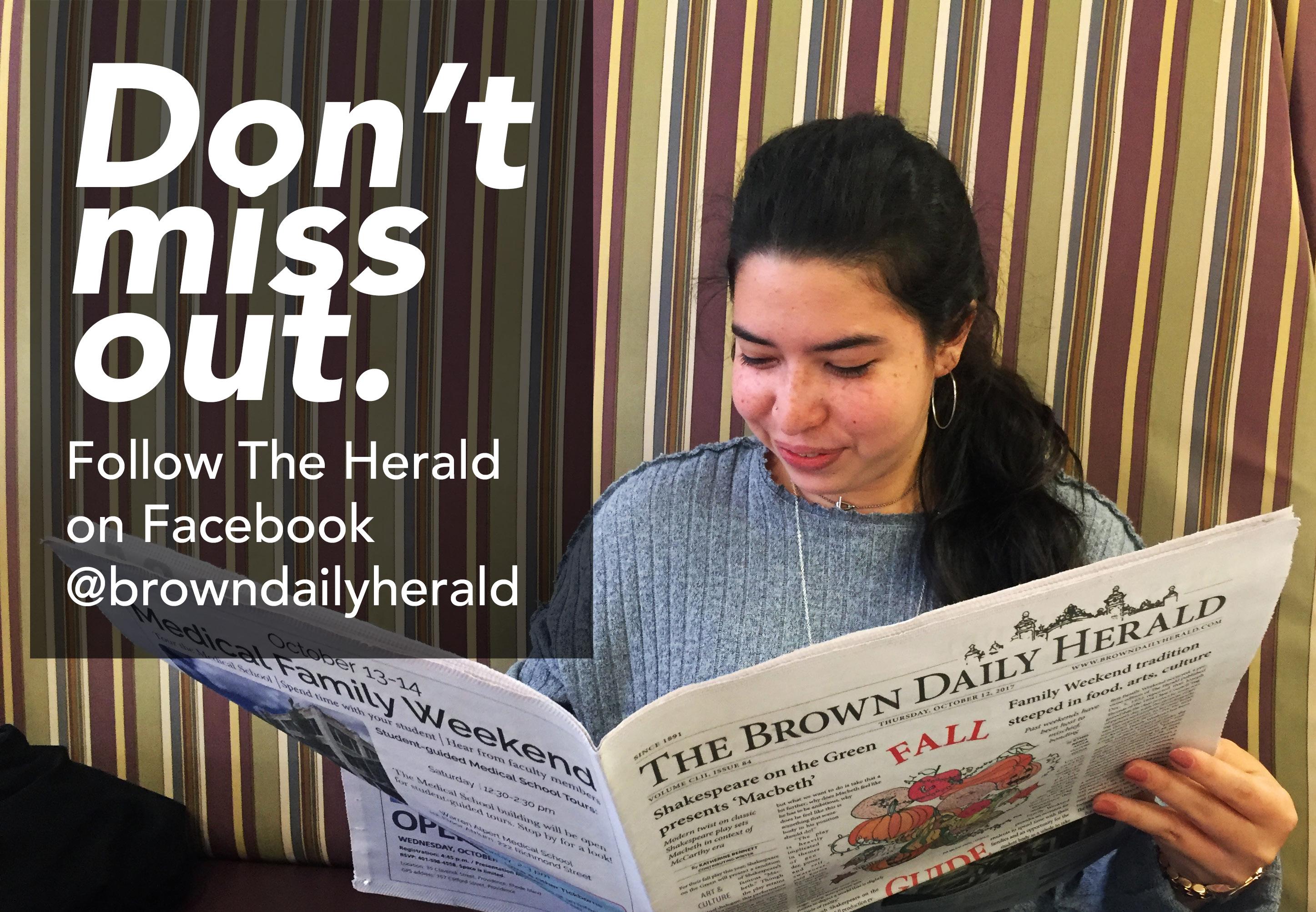 BY JENNIFER SHIM SENIOR STAFF WRITER
BY JENNIFER SHIM SENIOR STAFF WRITER
Brown Dining Services has begun construction on new kosher and allergy-friendly kitchens, as well as an enhanced halal station, in the Sharpe Refectory, according to a Nov. 14 Today@Brown announcement from Vice President of Dining Programs George Barboza. Construction is expected to be completed during summer 2023, with the new facilities in full operation by the start of the fall semester.
Barboza also announced that the University is planning renovations to Josiah’s that would increase the dining hall’s seating capacity and expand menu options. The renovation is set to take place over the summer and planned to be completed by August 2023.
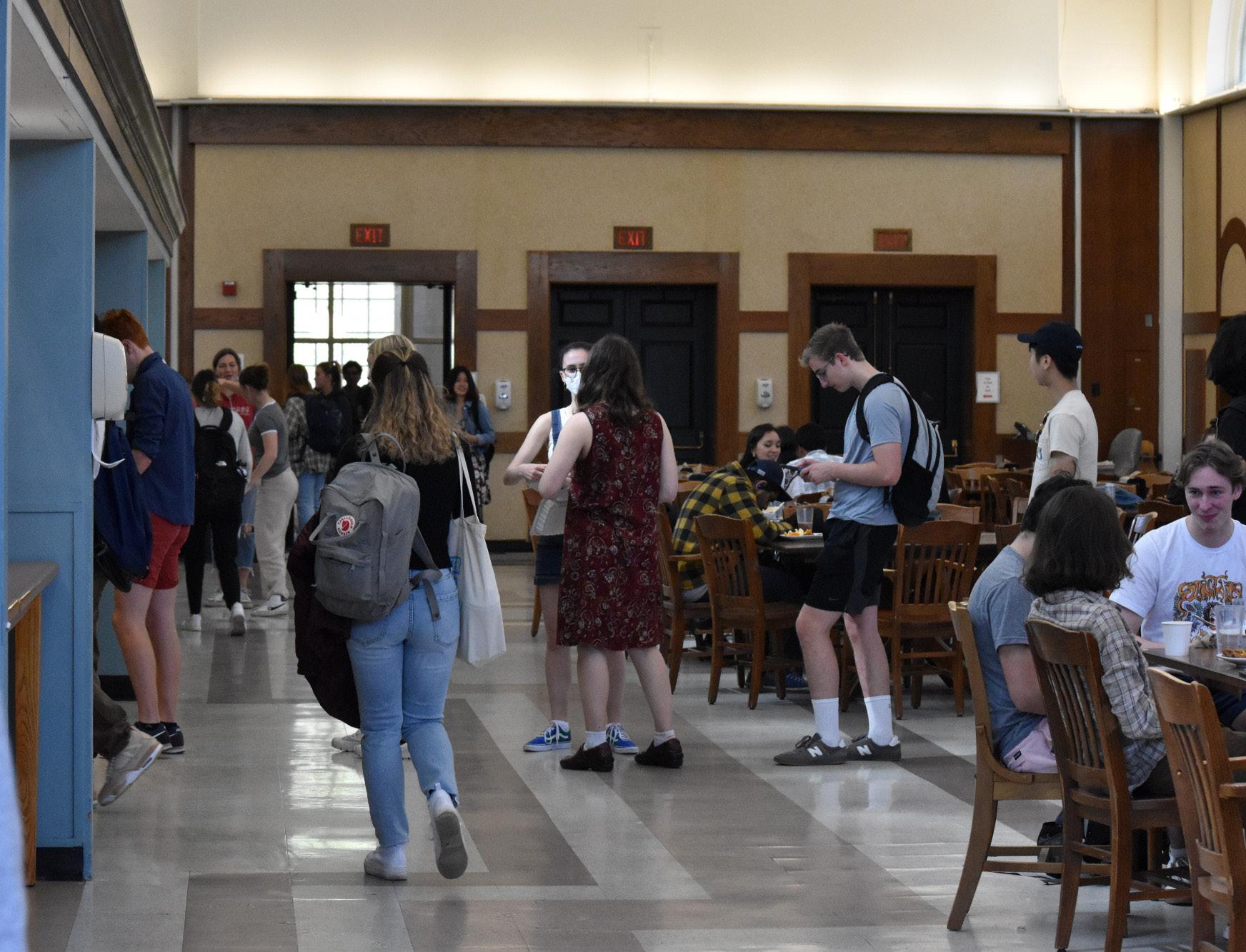
BDS is “looking forward to providing these three new stations that give us the ability to produce in smaller batches, offer an open kitchen concept and continue to provide high quality, healthy and delicious food,” Barboza wrote in an email to The Herald.
Initial construction plans, student excitement
The new kosher kitchen will include two separate kitchens for meat and dairy preparation, Barboza wrote in the announcement. The kitchens will be staffed by a full-time Mashgiach — a supervisor to ensure the kitchen maintains kosher standards — and chefs who “are trained in kosher menu concepts.”
The halal station, which will be located across from the kosher kitchens, will serve as a “dedicated space for all students looking to access food prepared in accordance with Islamic law,” according to Barboza’s announcement. The station will feature “halal recipes and menu concepts, with all meat purchased and served through the week certified as halal,” the announcement continued, though BDS is still in the early stages of planning these menus.
Sameerah Munshi ’23, president of the Brown Muslim Students’ Association, said that she was excited that the additional halal options would bring “more visibility and more awareness … to our needs and our practices.”
“I’ve been very touched (by) how willing Brown is and how willing the dining workers are to work with our needs,” she added.
The refectory’s new allergy-friendly kitchen will be “free of the nine most common food allergens: peanuts, tree nuts, eggs, dairy, fish, shellfish, soy, sesame and gluten,” Barboza noted in the announcement. It will also use equipment and cookware that is separate from the main kitchen.
Tyler Melwani ’24, a member of the University’s Dining Council — a committee of students and Brown’s dietician dedicated to addressing University dining issues — wrote in an email to The Herald that he is “aware of (student) concerns about cross-contamination … so it is a huge win for students with dietary restrictions to have a section of the dining hall that they can always trust.”
Student concerns
While Cherman is excited by the prospect of a kosher kitchen, she is curious about how BDS will regulate the kitchen to ensure it actually remains kosher.
“Keeping a kitchen kosher is more than just making it a separate kosher-designated area,” she said. In order for food to be kosher, the kitchen that prepares it must follow the rules of Kashrut — such as keeping utensils that touch meat and dairy separate.
While Fatima Yousaf ’25, who eats halal, is “happy that there’s more options now,” she expressed concerns about the quality of food that will be offered at the new halal station. According to the BDS website, students
on the halal meal plan currently get access to chicken dishes that “are certified halal in the dining halls along with special dishes around campus.”
Munshi said that in the past, dining halls have run out of halal food as non-Muslim students who do not strictly eat halal often take such dishes. “I’m a bit worried about that still kind of happening,” even with a designated halal station, she said.
“Having a dedicated halal station will increase our capacity to offer more amounts of halal offerings,” Barboza wrote in an email to The Herald. “Students can continue to rely on the fresh chicken dishes throughout all Brown Dining units to remain halal in addition to a variety of other offerings at the halal station.” The new stations
will be available to all students on a meal plan.
Melwani noted in his email that other dining halls could have benefited more from new offerings as “the Ratty (is) already one of the best dining halls for people with dietary restrictions.”
Melwani has also heard skepticism from students with allergies on “whether the new food offerings will taste good and have variety.”
“The basis of (allergy-friendly kitchen) meals is that they will have easy-to-identify ingredients,” Barboza wrote. “Students will continue to be able to ‘shop’ the dining hall for foods that fit their needs, or they can choose to eat primarily at the allergy-friendly kitchen.”
FRIDAY, JANUARY 27, 2023 8 THE BROWN DAILY HERALD | NEWS
UNIVERSITY NEWS
Students express excitement, concern about announced changes
DANA RICHIE / HERALD
Sameera Munshi ’23, president of the Brown Muslim Students’ Association, said that while she is excited for the new halal options, she is concerned that the dining halls might run out of the food due to high demand.

















 BY JENNIFER SHIM SENIOR STAFF WRITER
BY JENNIFER SHIM SENIOR STAFF WRITER
